There has been a slow uptick in the last 15 years or so in people interested in finding wild edibles in the landscape around them. From my perspective, this stems from the trend of featuring wild foraged products on the menus of pioneering New Nordic restaurants like Noma. As chefs helming restaurants with more accessible menus started to catch on, more and more folks became accustomed to seeing the names of local wild plants. This, at least in some folks, probably spurred a curiosity about them, and maybe inspired them to go out looking in their local area to see what sorts of free food was lying around.
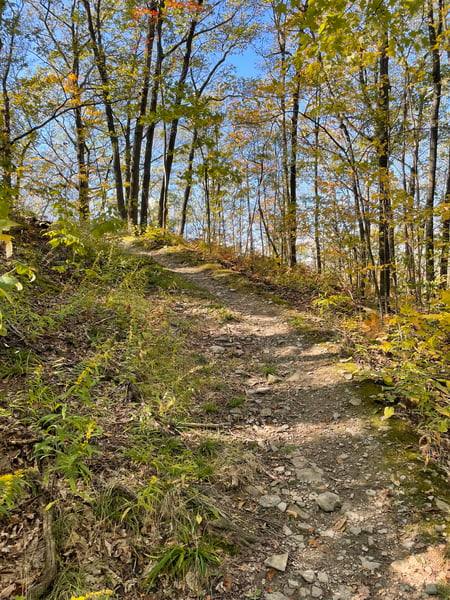
However, this trickling down of interest in foraging has been slow. Despite the many benefits of the practice like free food, interesting and delicious flavors you can’t find in a store, exercise, beautiful environs, and an increased connection with the place you live, I think gathering wild plants for eating can seem very intimidating to many people. In our modern world, most of us have become completely severed from any connection to the land in which we live.
Most of us grow up with very little, if any, botanical knowledge. Speaking from personal experience, before I became interested in foraging, I could identify only a handful of trees and plants, and I was raised in a pretty rural and agriculturally focused area. I can only imagine for most folks growing up in cities, the knowledge they can glean about their natural landscape might be even more limited. What knowledge we do gain is often in the interest of discouraging us from eating things we find in the wild. The fear of consuming a poisonous plant is drilled in from a young age (at least it was for me), and this can lead to a general anxiety that without a specific expertise and training that gathering food from the environment is a dangerous and possibly lethal pastime.
While this outlook is certainly more prudent than approaching foraging with reckless abandon (many plants will make you sick and yes, some of them can kill you), it's a shame that there is this perceived barrier to entry. However, with the aid of modern technology that barrier has recently become a lot more manageable. If you have a device that runs a relatively recent version of Android or iOS, you already have mobile plant ID capabilities. Both mobile operating systems have the ability to use web search data to identify plants on the photos you take. This is honestly a game changer even for a somewhat experienced forager like myself. Now instead of paging through multiple field guides, trying to memorize as many plants as I can so that I might recognize them when I go out, I can take a much more leisurely approach. If I’m on a hike, or even just walking down the street and see a plant that looks interesting, I can simply take a photo and get an ID on the spot. Here are some examples from a recent hike in a park where I live in upstate New York.
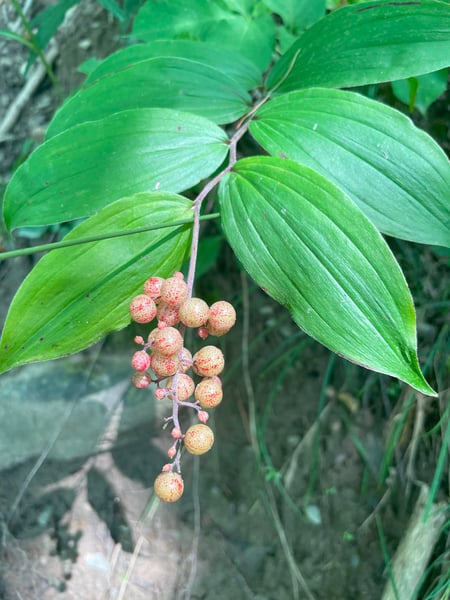 False Solomon’s Seal. Edible, but not choice.
False Solomon’s Seal. Edible, but not choice.
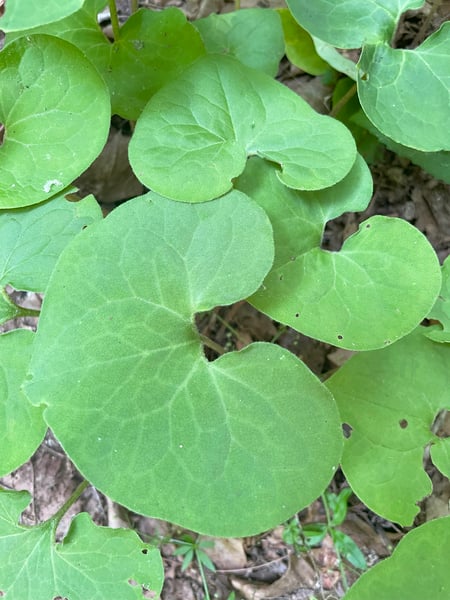 Wild ginger. Definitely edible and delicious.
Wild ginger. Definitely edible and delicious.
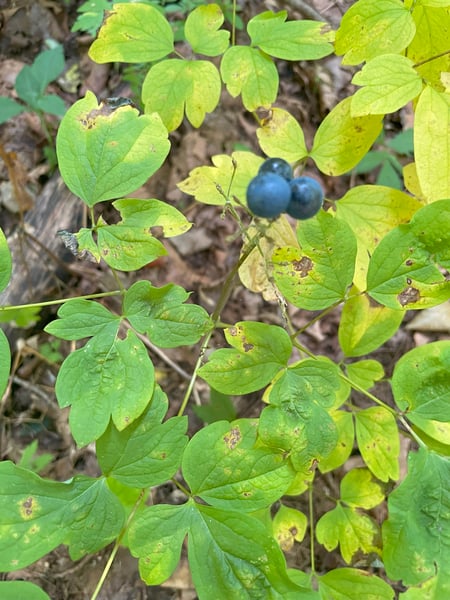 Blue Cohosh. Not really edible, but has some medicinal uses.
Blue Cohosh. Not really edible, but has some medicinal uses.
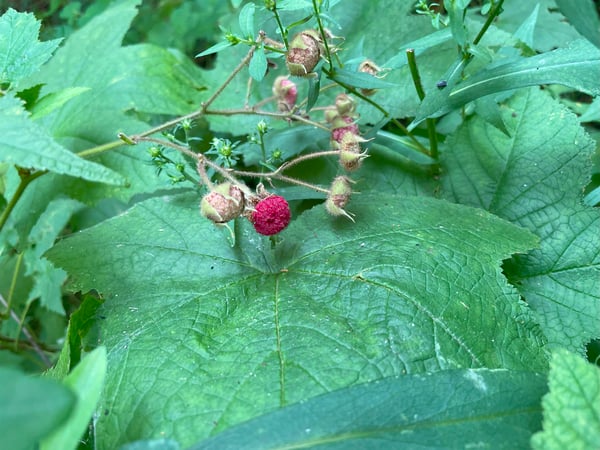 Thimbleberry. Delicious, delightful, and abundant.
Thimbleberry. Delicious, delightful, and abundant.
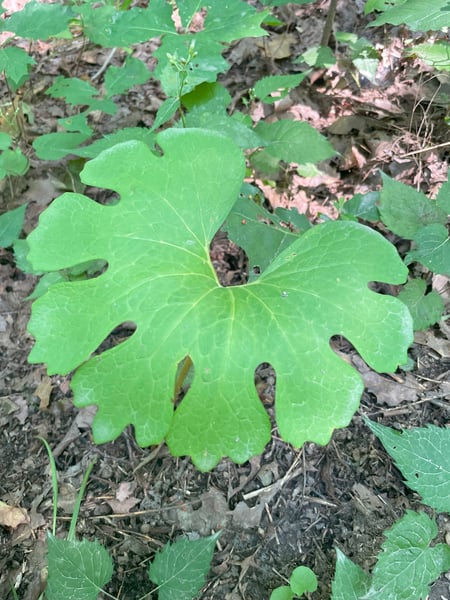 Bloodroot. Definitely not edible. The juice can cause permanent scarring.
Bloodroot. Definitely not edible. The juice can cause permanent scarring.
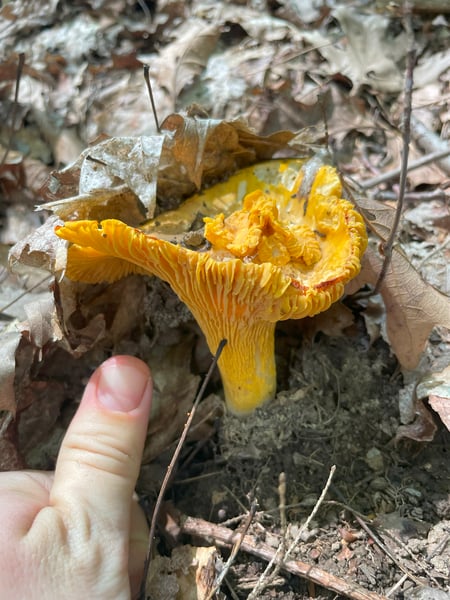 The built in identifier does have some limitations. It cannot ID most mushrooms that I’ve found. It didn’t know what to make of this very large chanterelle that I found
The built in identifier does have some limitations. It cannot ID most mushrooms that I’ve found. It didn’t know what to make of this very large chanterelle that I found
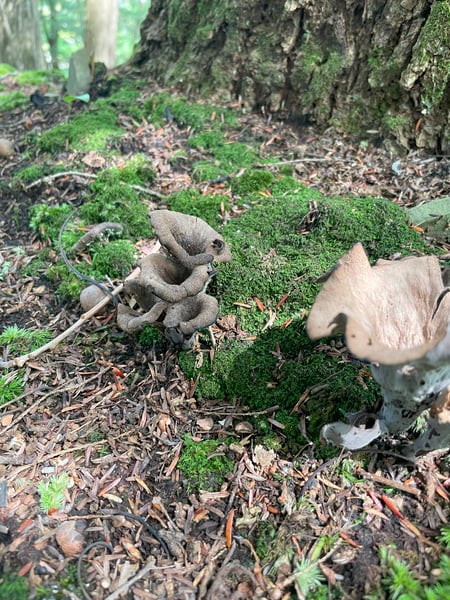 Nor could it make sense of these black trumpet mushrooms.
Nor could it make sense of these black trumpet mushrooms.
I also found mayapple, wintergreen, and hickory nuts, but I don’t have photos of those because those plants are already ones with which I’m quite familiar and can ID with high confidence.
Now, while pretty impressive, it’s very important to note that these built in plant ID features, and even purpose built plant ID apps, are far from perfect. I would estimate that iOS guesses right about 75% of the time. This may seem pretty good, but when you’re dealing with potentially lethal look-alike plants, you really want your confidence to be 100%. That's why I really recommend using these features or apps in conjunction with a published, vetted field guide.
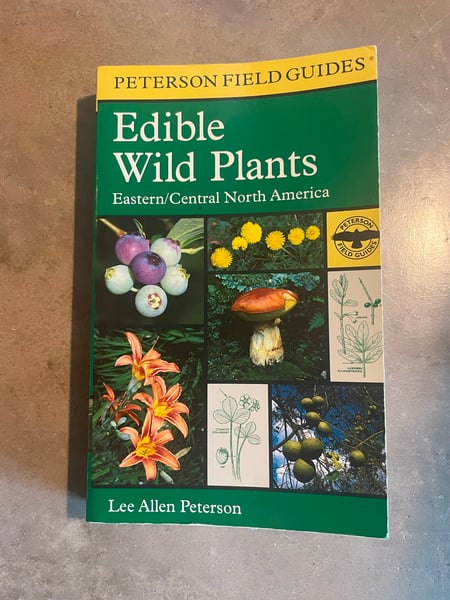 Peterson Field Guides are very thorough and reliable
Peterson Field Guides are very thorough and reliable
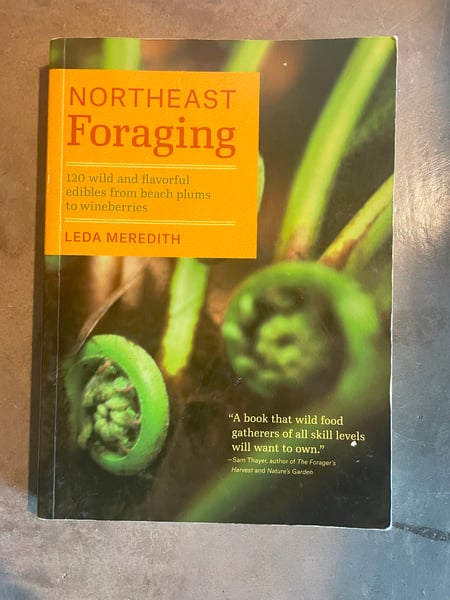 If you live in the northeastern U.S. this is a great, well organized, very beginner friendly book
If you live in the northeastern U.S. this is a great, well organized, very beginner friendly book
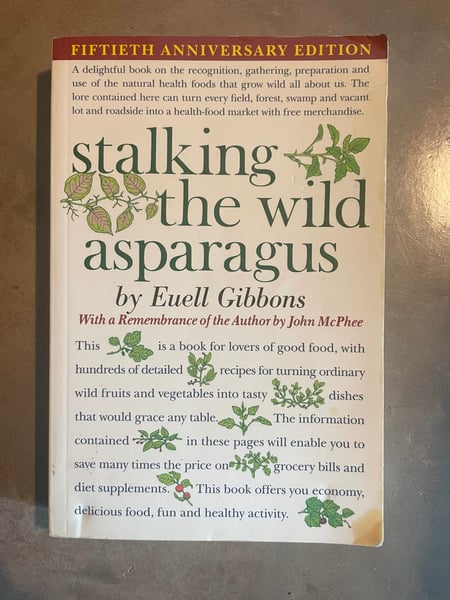 Not exactly a field guide, but a classic for any foraging enthusiast.
Not exactly a field guide, but a classic for any foraging enthusiast.
Additionally, there are a number of online content creators who are reliable (and entertaining) resources when it comes to the world of wild edibles. Alexis Nikole Nelson (@blackforager on most apps) and Sam Thayer (@wellfedwild on TikTok) are shining examples. Sam Thayer in particular is a bit of a legend, and his newly published field guide is supposed to be pretty incredible.
As always, when it comes to eating wild plants having a positive ID is very important. It's easier than ever now to gain access to the information you need to make a positive ID, but due diligence is still important. To that end. I also wanted to mention here the troubling development of AI-written foraging books, published by authors who do not exist. I have seen a few foragers talking about this new phenomenon online recently, and I have to say it is pretty disturbing. While the existential threat posed by the rise of AI may still be mostly abstract for most of us, this is a concrete example of how Skynet could thin the herd before ever releasing a barrage of nuclear weapons or an army of mechanical soldiers. Do not be among the first casualties of the Butlerian jihad, make sure you are getting accurate information in your foraging guides. On a more serious note, fake field guides have the potential to do real harm, and even end in fatalities, so it's important to take the time to make sure you’re getting information from a reputable source.
I hope this post has encouraged you to get out there and enjoy what’s left of the summer in whatever way you choose, and maybe to ID some new-to-you plants along the way. And if you’re interested in learning how to preserve the bounty that you gather from the land (or more conventional fare) check out our Summer Canning and Pickling class coming up this Saturday, September 2 at 11am at Lincoln Square. Happy hunting!


